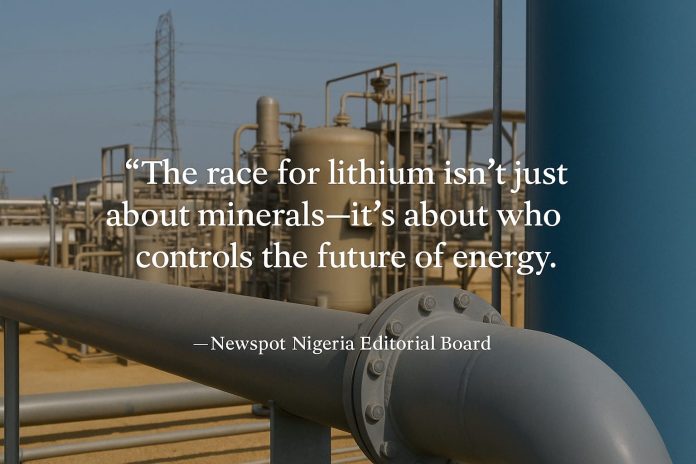Newspot Nigeria Energy Desk
In a major push toward securing energy independence, the United States Department of Energy (DOE) has committed a staggering $1.4 billion loan to EnergySource Minerals to construct a cutting-edge lithium extraction facility in California’s Imperial County—right by the Salton Sea.
This high-stakes move is part of a broader U.S. strategy to reduce dependence on Chinese lithium, which currently dominates over 60% of the global lithium chemical supply chain. EnergySource’s project, centered on Direct Lithium Extraction (DLE) from geothermal brines, reflects growing confidence in next-generation technologies that promise both environmental sustainability and domestic energy resilience.
At full capacity, the California plant aims to produce 20,000 metric tons of lithium hydroxide annually, enough to power roughly 500,000 electric vehicles (EVs). But while trial operations are now projected for 2026 and full production by late 2027, success is still contingent on meeting several technical and operational benchmarks.
The project has already attracted heavy-hitters in the energy space, including oil-field services giant SLB and Livent, a lithium company with decades of DLE experience in Argentina. Both investors are exploring how to deploy EnergySource’s tech in their own projects. Automaker Ford has also secured a lithium supply deal with EnergySource, underscoring the industry’s growing appetite for U.S.-sourced battery materials.
Other companies—including Controlled Thermal Resources and a Berkshire Hathaway energy subsidiary—are also vying for lithium beneath the Salton Sea. But the region presents challenges: low lithium concentrations, complex metal profiles, and hot brines that degrade conventional extraction materials. Companies like TerraLithium (a joint venture backed by Occidental Petroleum) and Controlled Thermal Resources have shifted their DLE strategies to adsorbent systems better suited for high-temperature conditions.
Meanwhile, Arkansas’s Smackover region is sprinting ahead, with companies like Standard Lithium and ExxonMobil already making significant progress toward commercialization. Arkansas benefits from brines with higher lithium concentrations and fewer impurities, allowing for faster deployment. Standard Lithium’s recent $160 million boost from Equinor and technology licensing from Koch Technology Solutions are just early signs of the state’s potential.
Jigar Shah, former head of the DOE’s Loan Programs Office, emphasized in a recent newsletter that unconventional lithium sources—like geothermal brines and clay—represent the “most unpredictable but promising” opportunities. The government’s massive loan to EnergySource is a calculated risk, supporting innovation where private investors are more hesitant.
From a global perspective, this shift may signal the beginning of a supply chain realignment. With countries like Nigeria beginning to explore lithium mining in states like Nasarawa, Ekiti, and Kogi, this U.S. breakthrough could catalyze international partnerships and technology transfers that help developing economies unlock the full value of their critical mineral reserves—without repeating the environmental and economic mistakes of the past.
For Nigeria, this is an urgent call to invest in research, local processing infrastructure, and regulatory clarity, so it doesn’t remain a mere exporter of raw lithium but becomes a central player in the global battery value chain.
— Reported by Newspot Nigeria
For deeper insights on Nigeria’s role in the global energy transition, stay with Newspot Nigeria.
– American Chemical Society
Share your story or advertise with us: Whatsapp: +2347068606071 Email: info@newspotng.com












 NEWSPOT NIGERIA DAILY PULSE
NEWSPOT NIGERIA DAILY PULSE  May 09, 2025
May 09, 2025




